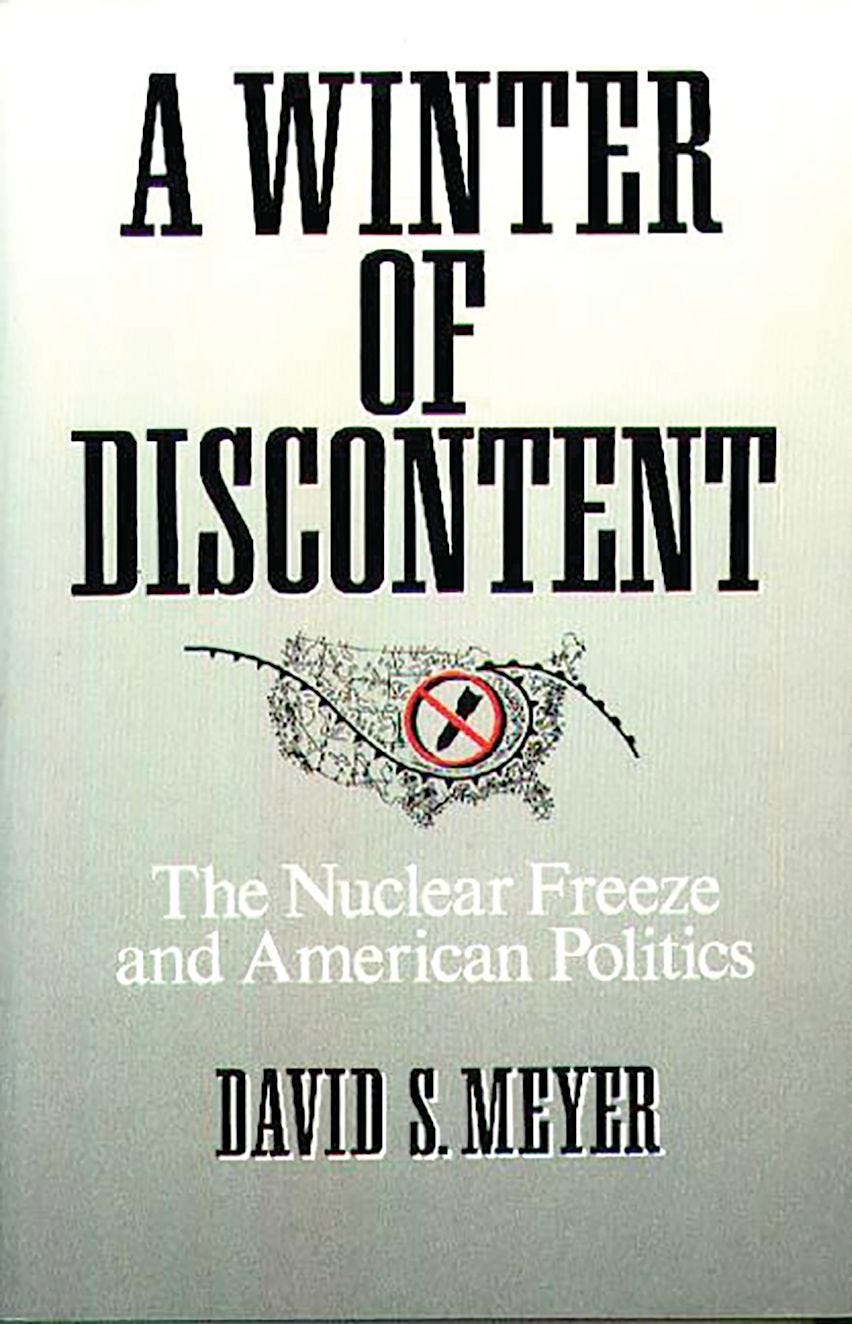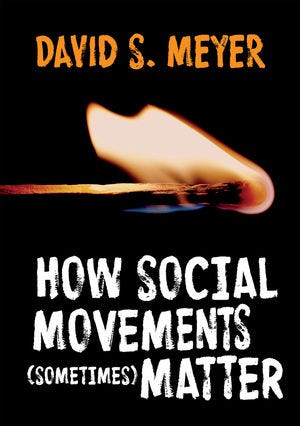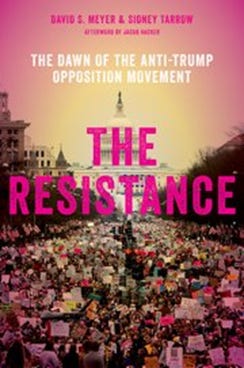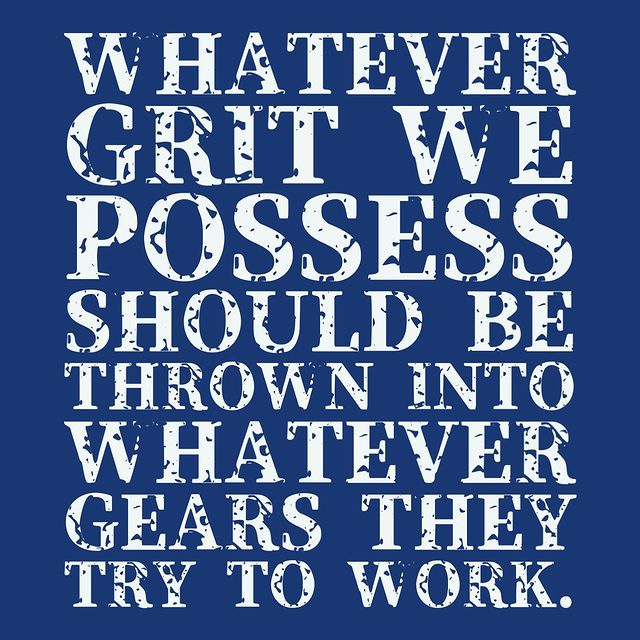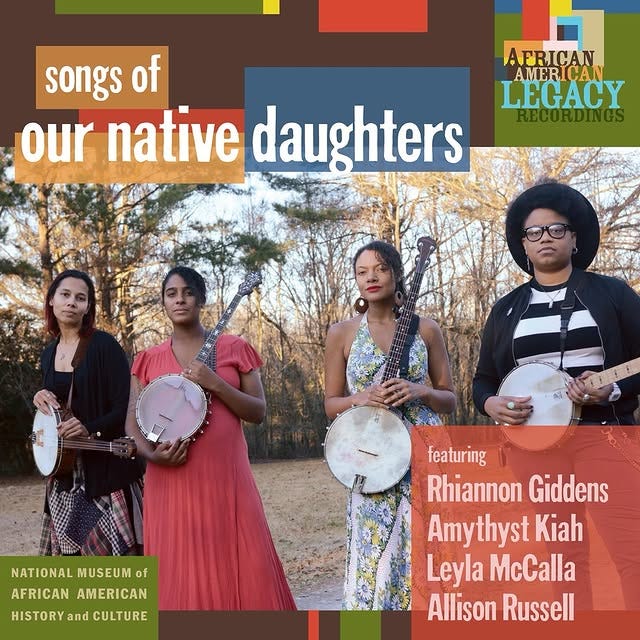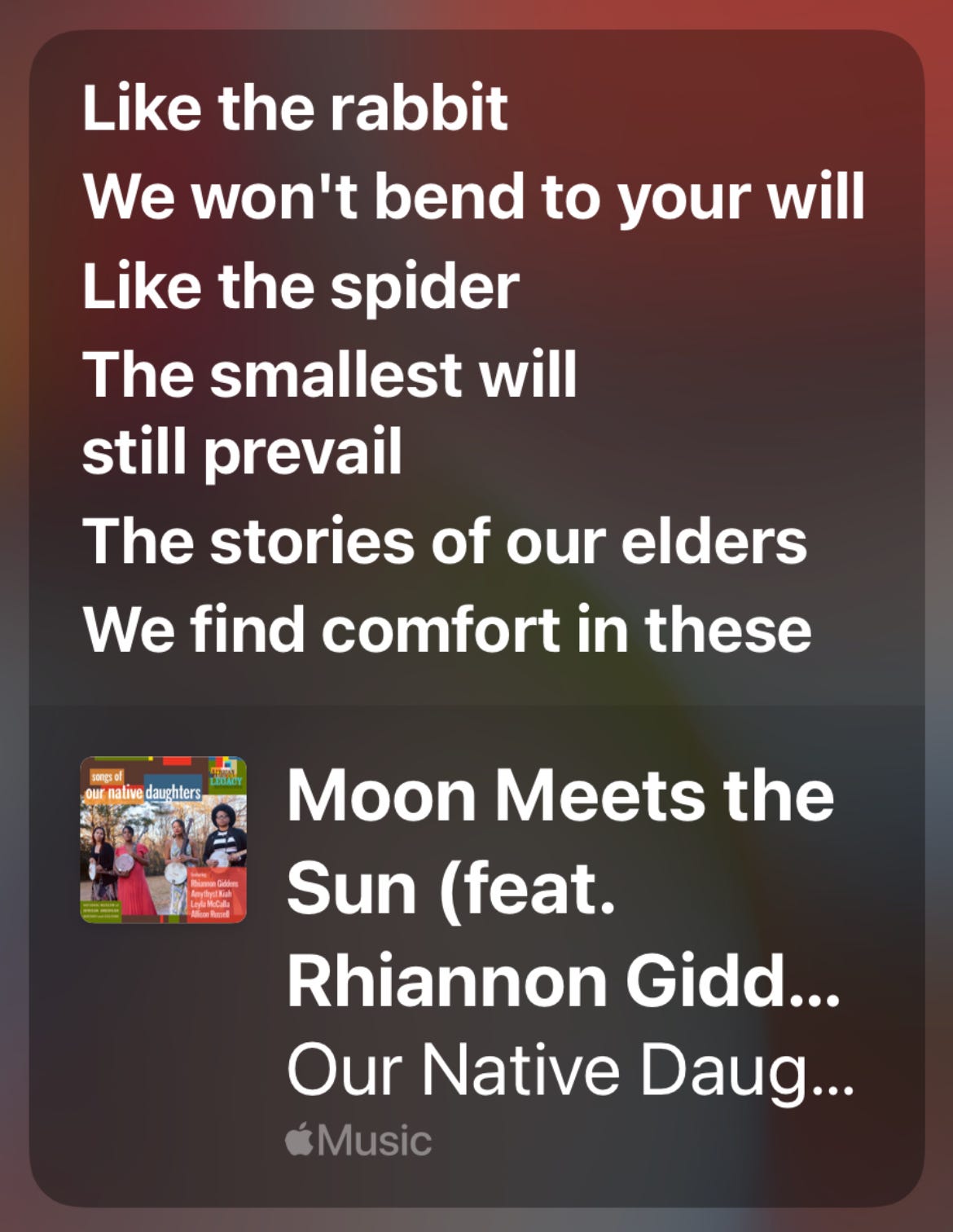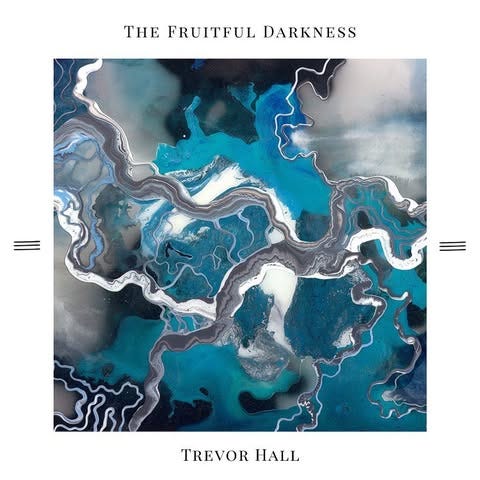Resources for Resistance No. 8
Taking heart: sustaining practices, prefigurative politics, and a trickster spirit
It’s the end of the second week of the ascension of America’s first would–be king. The onslaught of attempted alterations to the Constitutional order is staggering. Attacks on the liberty of individual constructions of gender continue unabated, and Diversity, Equity, and Inclusion is the bogeyman that allows the oligarchs unrestricted access to the reins of power social safety net. Things look pretty bleak. Yet I’m telling you to take heart. How even?
Exhibit A: Taking Heart
Smack dab in the middle of my college years, we had a little protest in New York City, on June 12, 1982, in favor of a Nuclear Freeze. It’s probably the largest protest this nation has ever seen before or since. I was there with probably 800,000 of my closest friends. March organizers estimated a million, newspapers 750,000. I always split the difference.
Fellowship Magazine is the publication of the ecumenical pacifist organization, the Fellowship of Reconciliation (FOR), which incidentally, helped instigate things like the Congress on Racial Equality (CORE), one of the nonviolently agitating organizations in the US Civil Rights movement. In the issue of Fellowship following the Freeze March, there were a series of articles covering it, including these spiritual exercises—secularized Buddhist meditations—recommended by Joanna Macy with whom I would come to be reacquainted decades later in the On Being podcast. She is an accomplished interpreter of Rilke and “deep ecologist.” In particular the “breathing through” exercise is the Buddhist practice of tonglen, breathing in suffering, and breathing out compassion for a widening circle of beings.
David Meyer is a sociologist and scholar of social movements who documented the Freeze movement, including its “smothering allies” like then Representative and now Senator Ed Markey of Massachusetts. Markey mansplained Randall Forsberg’s carefully crafted Freeze proposal into a nonbinding resolution, just like he would do with the Green New Deal decades later.
I used Meyer’s text when I taught social movements a year ago, and I like turning to him for inspiration. I recently found some heartening advice on his aptly named blog, Politics Outdoors.
The inaugural demonstrations were the opening act in the Resistance, which included a weekly parade of protests on specific issues, virtually every weekend in Washington, DC. And not just in DC. The following week, when the Trump administration suddenly attempted to implement a poorly considered
travel ban for Muslims, tens of thousands of Americans assembled at virtually every international airport, voicing opposition to the ban and support for travelers. It was easy to spot the trademark pussy hats that appeared throughout the Women’s March crowds. Organizers used contact lists collected at each event to organize the next one. The Resistance continued in different forms throughout the first Trump term, and repeatedly confronted and confounded the Trump agenda. (Sid Tarrow and I edited a book about it, and thought we were done when Joe Biden got elected. Sigh!)
The Resistance didn’t lose, even if activists didn’t get near all they wanted. The protests accompanied and inspired other acts of resistance, including lawsuits filed by ambitious politicians challenging the legality of the ban. Washington’s Attorney General, Bob Ferguson, was one of them. The protests were one demonstration that Ferguson could count on a base of public support for his challenge and sustain a political career. He found legal support as well. The courts twice forced the Trump administration to pare back the ban and limit its scope. Ferguson, by the way, was just elected Governor. Summary: the aiport protests helped stall, if not stop, the policies they challenged, and built support for institutional challenges.
Protest movements can matter, but not by themselves, and not on a timescale that makes for easy stories. And protesters never get all they want.
Politics Outdoors “Rethinking the Resistance?” Posted on November 26, 2024 by David S. Meyer
Part of the “orthodoxy” of the social movement literature had been to emphasize the extrainstitutional nature of social movements. One of my takeaways from the Meyer text that I used with my students was to see them as more of a continuity with “normal” politics. (Perhaps we might call these politics “indoors”).
I took heart by taking part in a preinaugural “People’s March,” in Portland, ME, in which I saw a number of eight year–old pussy hats. The beauty, diversity, and rebellious joy of the event remind me of “prefigurative politics,” a term bandied about during the Occupy Movement. You know, Gandhi’s idea of being the change you want to see in the world. I expect I will have to write about that, and the notion of a “social movement center,” which played prominently into the Civil Rights movement and this march in Portland.
Mass mobilizations are a vital form of pressure. But strategy is what one uses to conserve limited resources, especially in the face of an opponent with the widest array of resources in history.
Exhibit B: Strategy
Many have lamented the tepid Democratic response to the past few weeks, but not even Sanders, who emerged with an eight minute statement I heralded, is going to save us. “We are,” as June Jordan quipped, “the ones we have been waiting for.” Nina Lou, organizer and political strategist for the Working Families Party and former political director for AOC, wrote before the inauguration about the crisis in left organizing.
Unfortunately, complex structural change is hard. There are many myths about how change actually happens, including the liberal belief, the “monolithic myth,” that great men in history (politicians and business leaders) have sole decision-making authority and change happens only by pressuring them into or out of policies. But the left also has its own myths. Too many of us believe in “magic bullet” theories of change, in which a specific narrow tactic—just worker co-ops or just progressive primaries, for instance—will save us. In reality, change is a process of successfully building an entire ecosystem, not just one thing, to compete with and replace the entire existing ecosystem. In this approach, we would not only win elections but also resource our elected officials with the communications and political infrastructure they need to pass bills; we would not only expand the state-based social safety net but also invest in economic alternatives such as community banks and land trusts; we would not only build new unions but also rebuild third spaces where people can form meaningful relationships with each other that we can then organize. How to fund and build this ecosystem strategically is the question.
Nina Luo, “Left Organizing Is in Crisis. Philanthropy Is a Major Reason Why.” The Nation, January 16, 2025
It’s sound reasoning tactically to focus efforts on the House of Representatives. It’s not only that elections for those seats occurs in two years. It’s also that, as Bernie Sanders has pointed out, the GOP Regime has only a four–vote lead, and many Republicans prevailed with slim majorities in primarily blue districts. They’re vulnerable. But to what overall strategic end would we exploit this vulnerability.
A second area of vulnerability may be in the breathtaking power grab itself. After pointing out that Democrats in Congress mostly can do anything to stop what the Trump administration is doing, Josh Marshall founder of the venerable Talking Points Memo (HTT
) argues that Musk’s unprecedented power grab.There’s mounting evidence that even more than we know is being directed by Elon Musk and his private-sector employees, who are now fanned out across the government. He appears to have taken control of the federal payment system which allows his operatives to stop checks to any private individual in the country and/or examine all their personal financial information. According to The New York Times, Musk has tasked engineers with figuring out how to cut off the flow of funds from the Treasury to programs and priorities he believes conflict with the brief he received from Donald Trump. He has also taken control of some portion of the federal agency computer systems, allowing his operatives to lock federal workers out of key computer systems. We need a lot more reporting on just how he is exerting this power, specifically under what authority and who the people are he’s installed at these government agencies. Some have simply been appointed to new roles the old-fashioned way. But the best information we have about how “DOGE” is working suggests many are employees from his private companies operating with no legal authority at all.
There’s a pretty developed law that you can’t do stuff in the federal government if you’re not an employee of the federal government, or a contractor who is placed under the rules of the federal government. If you do do those things you become a de facto government employee and the law says you come under all sorts of record-keeping and disclosure requirements. Those requirements turn out to be quite important and consequential.
Josh Marshall, Talking Points Memo, “Who Can Stop Elon’s ‘Team’ Wilding Its Way Through the Federal Government?” January 31, 2025
Of course courts that feed ultimately up to the rubber stamp Supremes aren’t saviors either. The point rather is, as I suggested earlier and as Marshall argues here, to throw whatever grit we have into the gears.
Exhibit C: DEI
One of my favorite rituals in the “Church of the Holey Pajamas” has been to listen to the Acoustic Café. This morning my ears were alight with the sound of “Black Myself,” featuring Rhiannon Giddens, first introduced to me by her work with the Carolina Chocolate Drops. But it was the following song on the album that I’ve had on repeat all day. I offer it for consideration as an anthem for Black History Month.
The circular arpeggios of the strings were reminiscent of the kora of the griot tradition, as was the call and response singing, and the rhythm kept by what seems to be a shakere. This rootedness in the West African tradition shows the depth of Giddens’s craft as homage to the survivors of the Middle Passage. Her plaint reminds me of the vocals of Salif Keita, also deeply rooted despite ostracism for his albinism and his lack of familial inheritance of the griot tradition. How intersectional of Giddens to appeal to such a tradition.
But wait, there’s more, a link to West Africa also in the lyrics.
These both are references to tricksters on either side of the Atlantic, ‘Brer’ (Brother) Rabbit and Anansi the spider.
The origins of Brer Rabbit can be traced to the folk stories of western, central and southern Africa, where similar tales of trickster heroes continue to be part of the folk tradition. Amongst the Akan traditions of southern Ghana and the Ivory Coast, the trickster is usually the spider, Anansi; his stories are very similar in plot to the Brer Rabbit tales.
This deep reach into the survival lore of African Americans teaches me that DEI cannot be expunged with a few edicts, as if they were all inventions of the Biden administration. Not when there’s tricksters about. This evocation of the meeting of moon and sun for me also call to mind hatha yoga.
How wonderful also to discover in the prefigurative politics of the Portland, ME People’s March that there also is BIPOC–led Afro Yoga on these shores.
Summary
Take heart, then, belovèds. We have practices to sustain us, and our protests are not in vain. Strategic thinking may reveal political opportunities for leverage, and interim tactics throw our grit in the gears. Above all, the diversity, equity, inclusion, and belonging of our prefigurative politics teaches the deep lore of survival, a trickster spirit that spites the powers that be. My kids learned of these tricksters from authors like Tomie dePaola. Such seeds have come in handy.
Writing this blog is a labor of love. I love public libraries, where I tend to exist for free, and use the internet. But writing takes time away from earning my daily bread, often a struggle in these the waning days of Babylon. Donations are gratefully accepted for this labor of love. Please consider becoming a paid subscriber.
But also share, discuss, and interact. These also are important facets of the exchange of ideas. So often what I write is in dialog with what I read and hear, and the passions of people close to me.





